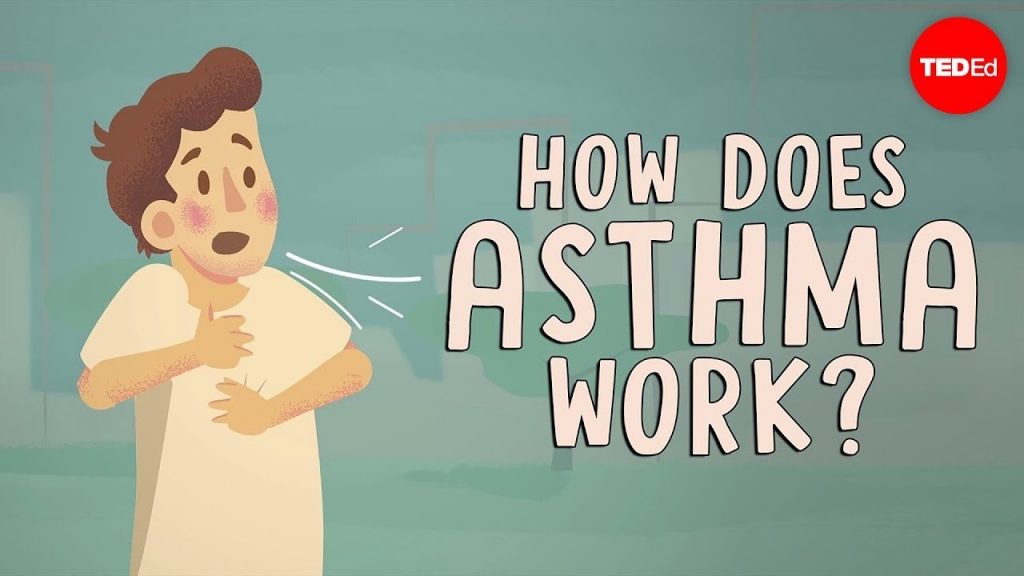ASTHMA – HOW BUTEYKO BREATHING CAN HELP

ASTHMA- HOW BUTEYKO BREATHING CAN HELP
(Kalopedis & Gaw, 2017)
Most people who experience asthma have had it since childhood because the likely cause is a combination of genetic predisposition as well as the environment you grow up in. The respiratory system is very sensitive to pollutants and inflammatory triggers. This is why the human body has many barriers to try and stop irritants from reaching the delicate lung tissue. These barriers are cilia (fine hair-like projections) in the nose and throat, mucus, and macrophages -immune cells which eat baddies! (U.S Department of Health and Human Services, 2011).
Things like tobacco smoke and pollution can damage and even burn away the cilia in the throat- increasing the likelihood of irritation to the vessels where air passes to the lungs and therefore increasing the risk of asthma, as well as infections such as pneumonia (Dezube, 2019).
Mouth breathing can dry out the mucous barrier of the throat, cause congestion in the nose and sinuses’, and disrupt the CO2/O2 ratios. Buteyko breathing can be very useful to train yourself (or your children) to become nose-breathers.
Mouth-breathing can dry the mouth and mucus barrier out, causing the respiratory system to be more at risk of irritation and asthma.
What is Buteyko Breathing?
Buteyko breathing was developed in the 1950s by Russian Dr Konstantin Buteyko to reverse the habit of mouth breathing as well as chronic over-breathing (hyperventilation, using short rapid breaths). Research has been done using Buteyko breathing, and the results have shown that regular use of the Buteyko method reduced hyperventilation, and corticosteroid use in asthmatics over a four-month period (Bowler, Green & Mitchell, 1998).
Try out this one approach regularly to see if you get results:
-Pull a chair up to a mirror.
-Sit up straight, and allow the shoulders to relax.
-Bring awareness to the breathing movements of the chest and belly.
-The mouth is closed, chest and belly are relaxed.
-Allow the breath to quieten and calm down, so you can only see very small movements in the chest and belly.
-Reduce the sound of the breathing as much as possible, while staying relaxed, for 4 minutes. You will likely feel a tolerable need for more air.
(McKeown, 2010)
What else can I do to improve my asthma symptoms?
It may also be worth getting allergy testing done, to see if there are any irritants in your home such as animal fur, moulds, or food intolerances which cause your body to have an increased inflammatory response- Dairy products, wheat and egg can be common triggers for people if their gut lining is irritated- see ‘leaky gut syndrome’ for more information.
Natural antihistamines can help you to calm inflammation from allergens, especially if you notice your asthma worsening in hay fever season. A combination of Zinc, Magnesium, Vitamin E and the bioflavonoids hesperidin and quercetin (found in onions), can ease symptoms (Macek, Jurikova, Skrovankova & Sochor, 2016).
If you or your child is asthmatic, you will also need to look after your thoracic spine and ribcage, particularly the upper part of the back. Unrestricted ribcage movement, proper contraction and release of the diaphragm, and spinal motion are all vital for breathing. Consider consulting with one of our Chiropractors at Balanced Health Care to assess whether these areas are functioning well.
Call us on 03 9376 4666 to book your appointment today with one of our chiropractors or massage therapists.
References:
Kalopedis, M., & Gaw, C. (2017). How Does Asthma Work? [Video]. Zedem Media.
U.S Department of Health and Human Services. (2011). Asthma in the US. Centers for Disease Control and Prevention.
Dezube, R. (2019). Defense Mechanisms of the Respiratory System – Lung and Airway Disorders – MSD Manual Consumer Version. Retrieved 6 January 2020, from https://www.msdmanuals.com/en-au/home/lung-and-airway-disorders/biology-of-the-lungs-and-airways/defense-mechanisms-of-the-respiratory-system
McKeown, P. (2010). Buteyko meets Dr Mew. Moycullen: ButeykoClinic.com.
Bowler, S., Green, A., & Mitchell, C. (1998). Buteyko breathing techniques in asthma: a blinded randomised controlled trial. Medical Journal Of Australia, 169(11-12), 575-578. doi: 10.5694/j.1326-5377.1998.tb123422.x
Mlcek, J., Jurikova, T., Skrovankova, S., & Sochor, J. (2016). Quercetin and Its Anti-Allergic Immune Response. Molecules, 21(5), 623. doi: 10.3390/molecules21050623
